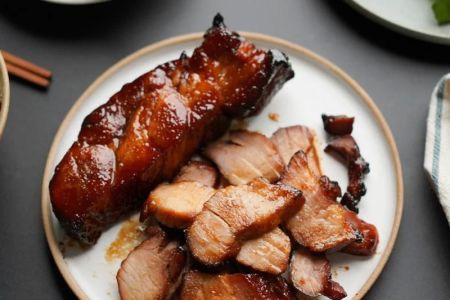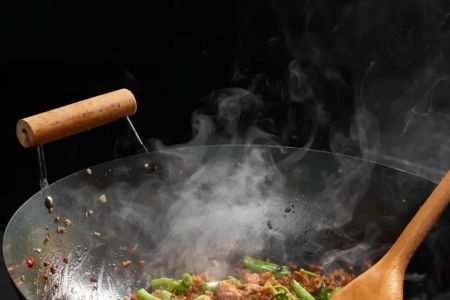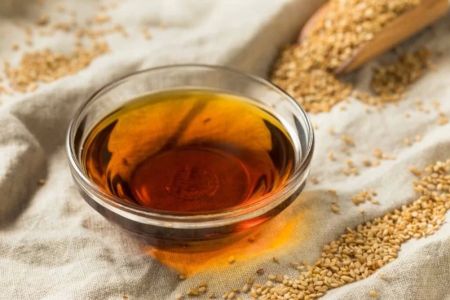How to Make Authentic Chinese Sweet and Sour Sauce
If you’ve ever been to a Chinese restaurant, you’ve likely tasted the tangy, vibrant flavor of sweet and sour sauce. This sauce is a staple in Chinese cuisine, often served with dishes like sweet and sour chicken, pork, or shrimp. However, making authentic Chinese sweet and sour sauce at home can be incredibly rewarding and allows you to control the ingredients for a fresher, healthier version of this classic dish. In this article, I’ll share my tried-and-true method for making delicious sweet and sour sauce from scratch.
1. The Secret to Authentic Chinese Sweet and Sour Sauce
When I first started making sweet and sour sauce at home, I realized that the key to an authentic flavor lies in balancing the sweet, tangy, and savory elements. Unlike the overly sugary, bright red versions you may find in takeout, authentic Chinese sweet and sour sauce uses simple ingredients that create a deep, complex flavor profile. It’s a mix of sugar, vinegar, ketchup, soy sauce, and sometimes pineapple juice—ingredients that you probably already have in your kitchen!
The challenge, however, is to balance these elements so that no one flavor overpowers the others. After experimenting with various recipes and techniques, I’ve found that the proportions and cooking method can make all the difference. This recipe will guide you through the steps to create the perfect, balanced sauce that tastes just like what you would find in traditional Chinese restaurants.
2. The Ingredients You'll Need
Before you get started, it’s important to gather all of your ingredients. You won’t need anything too exotic for this sauce, but there are a few essentials that make it unique and authentic. Here’s what you’ll need:
- White Vinegar: This provides the tanginess that gives sweet and sour sauce its signature bite. Some variations may use rice vinegar, but I prefer the sharper taste of white vinegar for that authentic flavor.
- Sugar: A key ingredient to bring in the sweetness. I use granulated white sugar, but you can experiment with other sweeteners like brown sugar if you like a deeper, molasses-like flavor.
- Ketchup: This gives the sauce its smooth texture and slight tomato undertones. It's one of the base flavors for sweet and sour sauce in Chinese cuisine.
- Pineapple Juice: This ingredient adds a natural sweetness and fruitiness. It's commonly used in Chinese sweet and sour sauce, especially in the classic sweet and sour pork dish.
- Soy Sauce: Adds an umami depth and balances the sweetness. It’s the salt element in the sauce, and I always use low-sodium soy sauce to keep the balance right.
- Cornstarch: To thicken the sauce to the perfect consistency. You’ll use this to make a simple cornstarch slurry that helps achieve the right texture.
- Garlic (optional): Some recipes include minced garlic for an added savory flavor. While it’s not a traditional part of the sauce, I enjoy the extra depth it brings to the sauce.
3. Step-by-Step Guide to Making Sweet and Sour Sauce
Now that you have your ingredients, let’s dive into making the sauce. It’s surprisingly easy to make from scratch, and the results are worth it. Here’s how I do it:
3.1 Combine the Liquids
Start by combining the white vinegar, sugar, ketchup, pineapple juice, and soy sauce in a small saucepan. Place the pan on the stove over medium heat, stirring occasionally to help dissolve the sugar. This will help the ingredients meld together into a smooth base for your sauce.
3.2 Simmer the Sauce
Once the mixture is smooth and heated through, bring it to a gentle simmer. This process allows the flavors to deepen and meld together. If you want a more pronounced sweet or sour flavor, feel free to adjust the sugar or vinegar to taste. I usually let it simmer for about 5 to 7 minutes, stirring occasionally to ensure it doesn’t burn on the bottom.
3.3 Make the Cornstarch Slurry
While the sauce is simmering, mix about 1 tablespoon of cornstarch with 1 tablespoon of cold water to create a slurry. This mixture will help thicken your sauce without creating clumps. I like to add a little cornstarch at a time, stirring continuously, to reach the perfect consistency. If you prefer a thicker sauce, you can add more cornstarch slurry, but keep in mind that the sauce will thicken further as it cools.
3.4 Add the Slurry and Cook Until Thickened
Once the sauce has simmered and the flavors have developed, slowly pour in the cornstarch slurry, stirring constantly. The sauce should thicken quickly. Continue stirring for about 1-2 minutes until the sauce is glossy and smooth.
3.5 Taste and Adjust
At this point, I always taste the sauce to check if it needs any adjustments. If it’s too sweet, I’ll add a little more vinegar. If it’s too tangy, I’ll add a touch more sugar or pineapple juice. This is your chance to make it perfectly suited to your taste!
4. Using Your Sweet and Sour Sauce
Now that your sweet and sour sauce is ready, you can use it in a variety of dishes. I love using it for classic sweet and sour chicken, but it’s also fantastic with pork, shrimp, or even as a dipping sauce for egg rolls or spring rolls. You can drizzle it over stir-fried vegetables or serve it as a sauce for grilled meats.
Another tip: If you have leftover sauce, you can store it in an airtight container in the fridge for up to a week. Just give it a good stir before using it again, as it may thicken slightly when refrigerated.
5. My Favorite Sweet and Sour Dishes
In addition to the classic sweet and sour chicken, I’ve made a few variations that are worth mentioning. I once used this sauce in a homemade stir-fry with crispy tofu, and it was a huge hit at a dinner party. The sauce adds just the right amount of sweetness and tang to complement the savory flavors of the tofu and vegetables.
I also enjoy serving this sauce with crispy fried shrimp or even as a glaze for grilled fish. Its versatility makes it an essential sauce to have in your cooking repertoire, and once you’ve made it from scratch, you’ll never want to go back to the store-bought versions.
6. Ready to Make Your Own Authentic Chinese Sweet and Sour Sauce?
If you’re excited to try making this delicious, homemade sweet and sour sauce, don’t hesitate! It’s easy, fun, and incredibly satisfying to make. Whether you’re planning to cook a full Chinese dinner or just need a flavorful dipping sauce, this recipe will become a go-to in your kitchen. For more authentic Chinese recipes, be sure to visit Chinese Food for more great tips and delicious ideas.






![Top Chinese Restaurants for Authentic Cantonese Cuisine in [Your City]](https://img.gochinarose.com/d33/2507/4157910400_450x300.webp)
